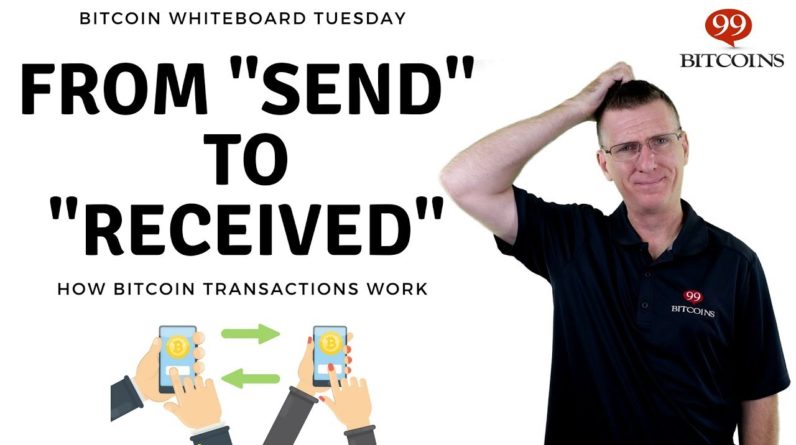
Hey crypto nation! This is Kris from Exodus
and in this video we’ll talk about the coin that started it all. The king of crypto. The
coin that for many people is synonymous to cryptocurrencies: Bitcoin. Bitcoin. Bitcoin So, without much ado, let’s dive into our
brief history of Bitcoin. It all started soon after the financial crisis
of 2008 when on October 31st the now famous whitepaper “Bitcoin: A Peer-to-Peer Electronic
Cash System” was shared on a cryptography forum by Satoshi Nakamoto, as an answer to
the shortcomings of the traditional, fractional financial system that had led to the crisis The problem with electronic payments in the
past is the risk of the same money being spent twice, this is called double spending. The
issue was the inability to verify whether a digital currency has been spent more than
once. The only solution that existed up to that point, was to have a “trusted” third-party
entity that verified all transactions, like a central bank. But the experience of 2008
had shown that these “trusted” entities don’t always work in the best interest of
the people whose money they handled.
Satoshi solved the double-spending problem
using cryptography, proof-of-work and a decentralized, peer-to-peer network of nodes that validate
transactions and transferred the ownership of wealth to each person’s hands. What a brilliant idea! What Satoshi proposed was that transactions
would be added to blocks of data, each with a timestamp of the time of creation, and each
new block would be added after the previous one and would be cryptographically related
to it, so that if one block is changed all subsequent blocks must be changed too. And
thus the block-chain was created. But in order to create a new block, there
needs to be a cost to it, otherwise anyone could add any number of arbitrary blocks to
the chain. That cost is none other than the electricity needed by computers to solve a
mathematical problem. The first one to do gets to add a new block to the chain. This
new block generates new bitcoins, which the miner that solved the problem gains as a reward
for their efforts, along with all the transaction fees. That is proof-of-work, also known as
“mining”, referencing the effort needed to mine precious metals.
This Proof of Work also secures the network
because in order for an attacker to take control of the network and change previous transactions
they would need to control the majority of the computing power of the network, the infamous
51% attack As we know, the cost of running a miner today
that actually mines bitcoins is extremely high, making the accumulation of such power
by one entity practically impossible. But even if two or three mining pools joined forces
and acquired the necessary 51%, it would still not make financial sense to attack the network,
as they would completely undermine their own wealth by destroying the credibility of Bitcoin. All that, and more, were described in the
original whitepaper that started the amazing journey of cryptocurrencies. Few days later,
Nakamoto registers the project on SourceForge, the open-source code platform, and on January
the 3rd 2009 the first ever bitcoin block, named the genesis block, is mined, awarding
Satoshi the first 50 bitcoins of the 21 million that will ever be created. In that block, Nakamoto puts the message:
“The Times 03/Jan/2009 Chancellor on brink of second bailout for banks.”, a headline
of London Times that day, which has been interpreted as both a timestamp and a critique on the
traditional financial system.
On January 9, version 0.1 of Bitcoin is published. It is
so complete, that for many it's an indication, along with the ingenious ideas in the whitepaper,
that Satoshi Nakamoto cannot be just one person, but it’s the pseudonym of a group of people.
The identity of Bitcoin’s founder remains a mystery until today, and although many names
have been proposed, there has been no concrete proof for any of them, while most of the candidates
have denied being Satoshi Nakamoto. Regardless of who Satoshi Nakamoto really
is, on January 12, 2009 he makes the first ever bitcoin transaction, sending 10 BTC to
developer Hal Finney, who was actually one of the candidates to be Satoshi. Fast forward
a few months and the first ever BTC/USD rate is established on October 5, 2009, based on
the cost of electricity to produce one bitcoin. The rate was $1 = 1309.03 BTC, or inversely,
1 BTC was worth just $0.00076, a fraction of a cent!
A few months later, on February
6, 2010, the first ever Bitcoin exchange is established.
It’s funny to look back to
these early discussions and the bitcoin price predictions these very early adopters were
making, where $12 dollars per BTC seemed like something taken out of a fantasy novel. Who
could have imagined back then where Bitcoin would be today. A couple of months later, in what would turn
out to be a historic event, the first purchase of goods with Bitcoin takes place. Developer and early adopter, Laszl, offers
10,000 BTC for two large pizzas, in bitcointalk.org. Someone took him up on that offer and ordered
for him the two pizzas. With a cost of around $25 dollars, these pizzas set the first “real-life”
value for BTC at $0.0025 dollars. With today’s valuation those pizzas are worth over $100
million dollars! Definitely the most expensive pizzas ever bought. Regardless, the 22nd of
May 2010 was a significant milestone in Bitcoin’s history and has since been celebrated in the
ecosystem as “Bitcoin Pizza Day”.
But even 1.5 months later, Laszlo had already
overpaid for his pizzas. Version 0.3 of Bitcoin, that was released on July 7, is mentioned
in tech-site slashdot.org and that drives many users to explore the new technology.
As a result, in just five days, Bitcoin price rises tenfold, from $0.008 on July 12 to $0.08
on July 17. On December 10, 2010, an article on PCWorld
about the Wikileaks scandal and its inability to get access to financial services, mentions
Bitcoin as a funding alternative. The next day Satoshi Nakamoto posts his final words
on bitcointalk.org: “It would have been nice to get this attention in any other context.
WikiLeaks has kicked the hornet's nest, and the swarm is headed towards us”.
For a man
who apparently values anonymity and privacy, having Bitcoin linked with Wikileaks at that
time, seems to have raised a red flag that prompted him to leave the project. As he said
in his final email correspondence a few months later, “[he] moved on to other things”. On February 9, 2011, Bitcoin reaches parity
with the dollar on Mt. Gox, and a couple of months later, on April 23rd, it surpasses
the Euro and the British Pound. And less than 1.5 months later, the first parabolic movement
of Bitcoin’s price takes place. On June 2nd, it reaches $10, then by June 8, it climbs
to its highest price yet of $31.91, only to plummet again to $10 four days later, on June
12. This movement would become known as “The Great Bubble of 2011”, and as we know today,
it wouldn’t be the last parabolic movement Bitcoin ever did. Although the core idea and functionality of
Bitcoin has remained the same since its inception, it has also received many improvements. In
April 2012, one such major improvement goes live. It’s Pay-to-Script-Hash (P2SH), which
gives birth to addresses starting with 3. These addresses allow the recipient to set
any number of arbitrary conditions that need to be met in order to spend the funds, like
requiring the signature of more than one person, the famous multisig wallets.
Around the same time, another improvement
that made the life of users a lot easier was adopted: Now this is a mouthful. Hierarchical
Deterministic Wallets or otherwise simply known as HD wallets (like Exodus) where a
single Master Key, not just for Bitcoin but for all assets controls all the rest of the
public and private keys in the wallet. To make matters even simpler, another improvement
translates this Master Key to a number of words, with which a user could restore all
of their Private Keys and addresses in case of a mishap. This is the famous Mnemonic Phrase,
aka 12-word secret phrase or wallet seed. On block 210,000 the reward for mining a block
was reduced from 50 BTC to 25. As with the limited supply, the halving of the mining
rewards was included in Bitcoin protocol since the beginning to limit inflation and ensure
the scarcity of bitcoins. The halving happens every 210,000 blocks, or approximately every
four years, and since this first one we’ve had two more: the second one on July 9, 2016
and the third, on May 11.
The halvings will continue until the reward drops to zero, when
all 21 million bitcoins will have been issued, and it’s expected to happen around the year
2140. After that point the miners will be rewarded only with the transaction fees. Halvings so far have been followed by a price
increase, so a few months later, in April 2013 Bitcoin price surpassed $100 for the
first time, while the market cap had broken the $1 billion dollars threshold just a few
days earlier. Bitcoin even reached $266, before crashing again to around $100, after another
exchange hack. Around that time governments start to take
notice of Bitcoin and try to figure out how to categorize and regulate, or even control,
this new digital currency.
In October of the same year, the FBI manages to shut down the
infamous dark web site Silk Road and seize its assets. Because of that incident Bitcoin
starts to get portrayed as the coin of criminals and money laundering. During these months, Bitcoin saw a huge surge
in price, going from a little over $100 in October to breaking the $1000 barrier in November
and December. But a ban from China and the bankruptcy of Mt. Gox, both in a span of a
couple of months, drove the price down again, and Bitcoin wouldn’t reach that psychological
barrier again until January 2017. Mt. Gox, a Bitcoin exchange that dominated
the market until February 2014, when it filed for bankruptcy, after it became clear that
850,000 bitcoins had been lost over three years and several other misappropriations
had taken place.
At the time, it was feared by many Bitcoin enthusiasts that the incident
could bring the death of Bitcoin. Bitcoin has been pronounced dead several times
over the years, but this was perhaps the only time that the fears came from inside the ecosystem.
Thankfully, Bitcoin persevered, as it has always done, and Mt. Gox has since become
a textbook example of the importance of not storing your funds on an exchange. As crypto evangelist Andreas Antonopoulos
has put it: “Not your keys, not your bitcoin”, this motto’s purpose is to instill the idea
that Bitcoin was invented to allow transactions directly between users, without the need of
an intermediary.
In order, however, for someone to do that
and be the true owner of their bitcoins, they need to hold the Private Keys used to sign
the transactions. When users send money to an exchange they also transfer the true ownership
of those funds to these exchanges, since the exchange holds the private keys to the deposit
addresses, not the user. This makes it clear why it’s important that
Private Keys remain secret and safe, private, as the name implies. The Private Keys sign
the transactions, and that signature is the only thing miners need to consider a transaction
valid. So, whoever controls the Private Key to an address controls the funds in it. And
if that someone is anyone else other than the true owner of the funds, then they’re
as good as gone.
But let’s get back to our timeline.
2017 was definitely a very interesting year
for Bitcoin and the ecosystem in general. Multi-million Initial Coin Offerings (ICOs),
forked coins, and of course, the bull run that brought a lot of buzz around “the new
digital currency”.
During the first few months of 2017, Bitcoin is moving around
the $1000 dollar mark. But after May, its price starts climbing and climbing. From around
$1300 on May 1st, it will reach almost $7500 by November 9. But the true bull run hadn’t
yet come.
Meanwhile, amongst the constantly changing price and political field, Bitcoin
improvements kept coming.
One of the most important improvements was Segregated Witness,
or SegWit, as it’s called in short. SegWit separated the signature and script part of
the transaction from the part with the actual transaction details, effectively increasing
the block size from 1 MB to up to 4 MB, and as a result reducing transaction fees and
improving scalability, which is seen as one of Bitcoin’s major drawbacks. Increasing
the block size was a matter of much debate in the Bitcoin community, and as a result,
although the SegWit proposal existed since 2015, it wasn’t until August 2017 that it
was implemented. And still not without controversy. On August 1st, 2017, Bitcoin Cash (BCH) forked
or split from BTC, with its community representing the belief that Bitcoin should be a means
of transaction, while Bitcoin Core, as the original Bitcoin came to be known, is viewed
more as a store of value.
Bitcoin Cash’s creation initiates the “era of the forks”,
a period of around a year, where forks of Bitcoin, and other famous cryptocurrencies,
start popping up left and right. Most of these coins had nothing new to offer and their sole
purpose was to create coins out of thin air, so they soon fell into oblivion.
But others
stuck around, like Bitcoin Gold or Bitcoin Diamond, which both support SegWit, unlike
BCH. Currently Bitcoin can’t come even close
to competing with legacy payment systems. With a capacity of just 7 transactions per
second and confirmation times of 10 minutes on average, it’s far behind Visa’s maximum
capacity of 65,000 transactions per second and its nearly instant payments. Furthermore,
because only so many transactions can fit in a block, when the network is congested,
fees skyrocket, in a bidding war between users to get their transaction in the next block.
So,
what’s the upgrade that will solve all these problems? The answer: Lightning Network.
We’ll
cover the lightning network in another video. on December 17, 2017, it reached the highest
price to date: $19,783.
Bitcoin was mentioned almost daily on mainstream media,
driving a lot of new people to the ecosystem, to find out what this “phenomenon” is
and take part in the gains so many are already enjoying.
FOMO, the “Fear Of Missing Out”
is on full throttle, driving many people to buy bitcoins at its highest prices. But as it had happened before, and will surely
happen again, Bitcoin was on a parabolic movement, and as its price rose, so it fell. Bitcoin, and all cryptocurrencies, are definitely
highly volatile and have seen many extreme highs and extreme lows. But what many traders
like to point out is that after each crash it settles at a higher low than the previous
one. What are your thoughts? Will Bitcoin be able to hold above 10k? Is a new bull run on the horizon?
We can see bitcoin’s past and the technological
and financial revolution it brought is well documented.
But where do you think is Bitcoin
today and what will its future hold? Let us know in the comments below. If you enjoyed
this video hit that like button and subscribe or more crypto videos from Exodus. Until next time… Hodl on! Or buy pizzas
with bitcoin..




